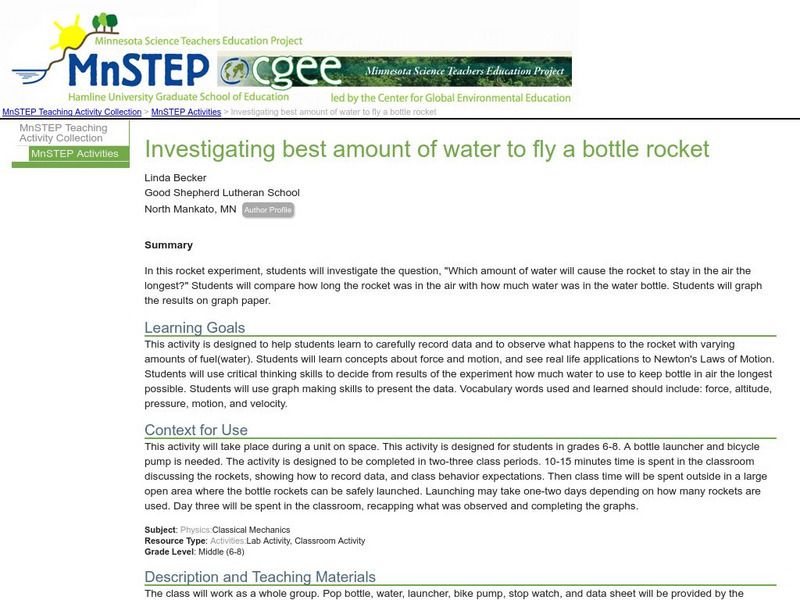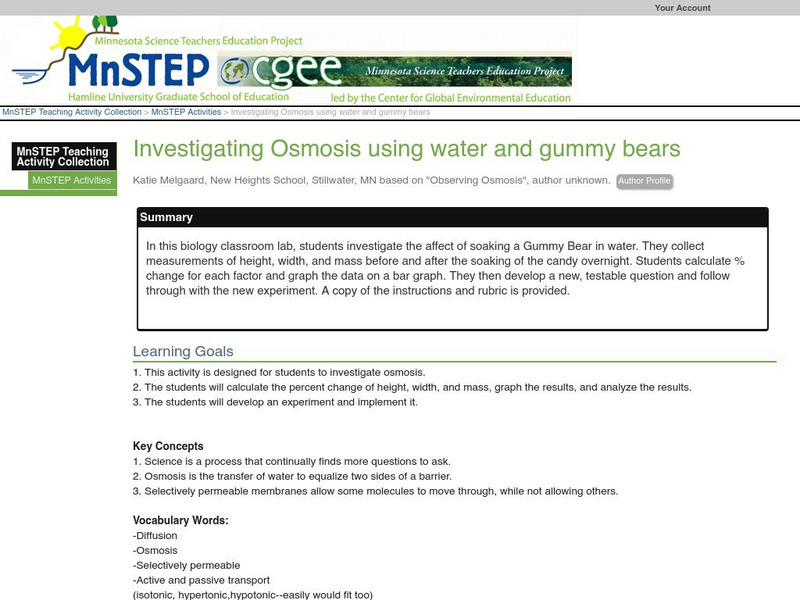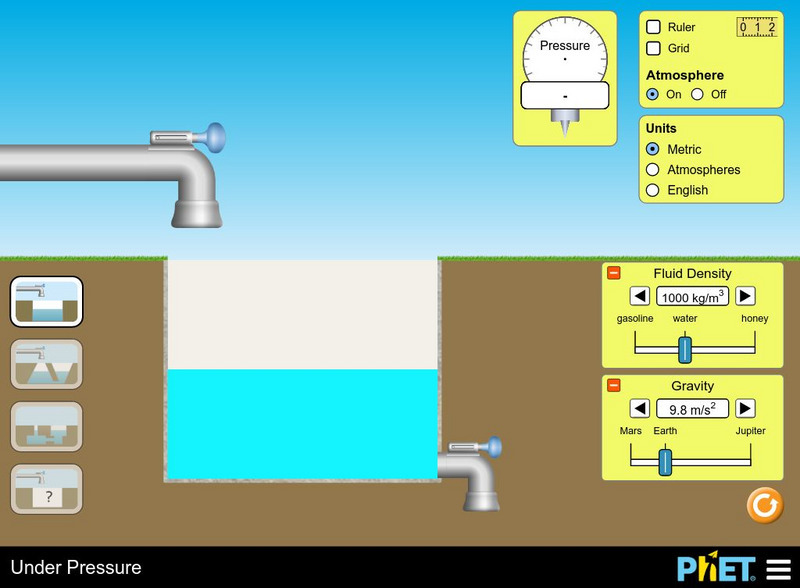Hi, what do you want to do?
Curated OER
ABOUT ALL YOU CAN EAT: Superfoods
Students trace back through time to see how the nutritional value of food consumed was enhanced. In this nutrients lesson students complete several activities that show the mass of food, and its PH value.
Curated OER
The Science of Hurricanes
Young scholars are introduced to the science of hurricanes in an effort to highlight how forces change the speed and direction of motion.
Curated OER
Tracking Hurricanes
Students explore how technology and science are used to identify, measure, and track powerful tropical storms to better warn and secure people from their impact. They research hurricanes online by tracking the storms on a hurricane website.
Curated OER
Project Geode
Young scholars predict the appearance of a geode's internal structure based on its mass and density. They form a hypothesis based on the data they collect. They also identify common minerals found in Illinois.
Curated OER
Pop Rockets
Learners work together to design and build a paper rocket. They place a propellant in the contraption to make it fly. They discover Newton's third law of motion.
Curated OER
Sentence Completion
In this grammar worksheet, learners finish ten sets of unfinished sentences by joining them together with a variety of -ing expressions.
Curated OER
Science Quizzes: Weather Quiz
In this weather science quiz instructional activity, students respond to 20 short answer and true or false questions regarding weather and extreme weather.
Curated OER
The Science of Hurricanes
Students explore hurricanes. In this science lesson, students discuss the aspects of hurricanes and watch videos of hurricanes. Students discuss the motion of the hurricanes.
Curated OER
Promoting Inquiry Throught Computer-Based Labs
Student Teachers are given the opportunity to examine how to use a computer-based laboratory for inquiry. The practice is done to teach future teachers how to use these tools so they can be ready for use in the classroom environment.
Curated OER
How Can You Prevent Spoilage?
Students complete laboratory activity to discover what temperature is most effective in prohibiting bacterial growth in two percent milk. Students then write lab report detailing findings.
Curated OER
Calorimetry Exercises
In this calorimetry learning exercise, learners determine the specific heat and the heat of neutralization in the 2 problems they solve.
Curated OER
Make Sense of Nature
Students participate in this program that heightens their awareness and curiosity of nature as well as their sense of adventure and exploring new surroundings. They identify and choose an object from nature after exploring it with other...
Curated OER
Elasticity of Gases
Students investigate gas laws and apply them in experimental conditions. Using an apparatus composed of a syringe and wooden blocks, they experimentally verify Boyle's and Charles' laws of gases.
Curated OER
Hurricanes 2: Tracking Hurricanes
Students examine the role of technology in identifying and tracking hurricanes.
Curated OER
Rock Cycle
Young scholars explain the processes involved in the rock cycle. In this earth science lesson, students identify the different kinds of rocks. They complete a worksheet during the activity.
University of Colorado
University of Colorado: Ph Et Interactive Simulations: Fluid Pressure and Flow
Explore pressure in the atmosphere and underwater. Reshape a pipe to see how it changes fluid flow speed. Experiment with a leaky water tower to see how the height and water level determine the water trajectory. Java required.
TeachEngineering
Teach Engineering: Dams
Through eight lessons, students are introduced to many facets of dams, including their basic components, the common types (all designed to resist strong forces), their primary benefits (electricity generation, water supply, flood...
Science Bob Pflugfelder
Science Bob: Make a Cartesian Diver!
This site presents a procedure for creating a cartesian diver, a miniature submarine which rises or sinks depending upon the water pressure within a closed bottle. The site also introduces basic concepts of water and air pressure.
Center of Science and Industry
Cosi Columbus: Can You Stand the Pressure
Science experiment that demonstrates the four states or phases of matter: solid, liquid, gas, and plasma. Includes full list of materials, procedures, and scientific explanation of how you change water from a liquid state to a gaseous...
Science Education Resource Center at Carleton College
Serc: Investigating Best Amount of Water to Fly a Bottle Rocket
In this rocket experiment, students will investigate the question, "Which amount of water will cause the rocket to stay in the air the longest?" Students will compare how long the rocket was in the air with how much water was in the...
Science Education Resource Center at Carleton College
Serc: Investigating Osmosis Using Water and Gummy Bears
For this biology classroom lab, students investigate the affect of soaking a Gummy Bear in water. They collect measurements of height, width, and mass before and after the soaking of the candy overnight. Students calculate % change for...
PBS
Pbs Teachers: Bottle Fountain Experiment
Demonstrate how heating expands air molecules by constructing a bottle fountain powered by air pressure.
Other
Easy Science Experiments: The Incredible Can Crusher
Can you crush a soda pop can with your bare hands? Try this experiment where with the help of air pressure you can show your friends what kind of strength you have. Make sure you stay safe! There is a video included.
University of Colorado
University of Colorado: Ph Et Interactive Simulations: Under Pressure
Students studying pressure will better understand its concepts with this virtual experiment that tests how pressure changes in air and water as the fluids, gravity, container shape, and volume changes.

























